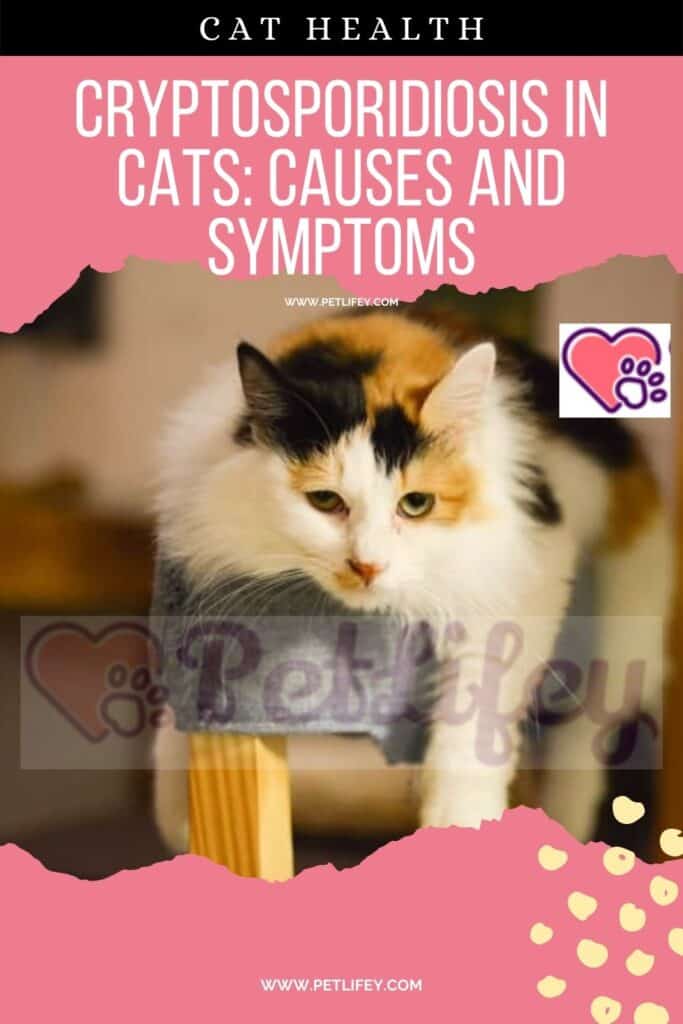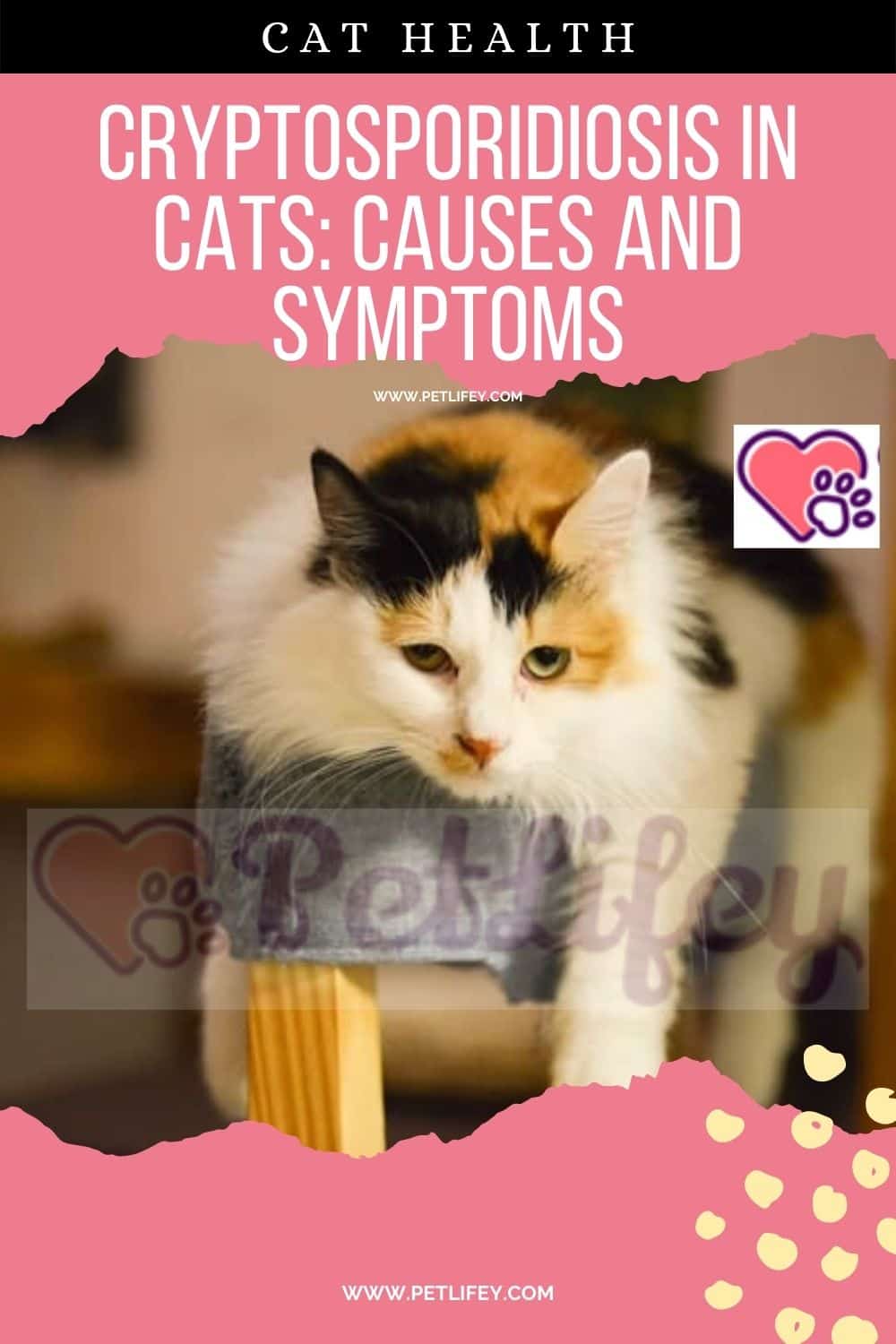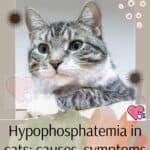Cryptosporidiosis in Cats: Understanding Causes and Identifying Symptoms

Cryptosporidiosis in cats is an intestinal disease caused by the protozoan parasite Cryptosporidium. Typically, this condition results from your cat ingesting contaminated food or water, often laden with feces containing the infectious stage of the parasite, known as oocysts. Infection can also occur through contact with infected feces or other animals, making environments with multiple cats more susceptible to the spread of the disease.

Symptoms of cryptosporidiosis can vary but often include persistent and watery diarrhea, which may be accompanied by mucus. Your cat might also exhibit reduced appetite, weight loss, and lethargy. In some instances, especially in younger or immunocompromised cats, the infection can cause more serious health issues, potentially involving the respiratory tract or other organ systems. The presence of these symptoms warrants attention and a consult with a veterinarian for accurate diagnosis and treatment.
Understanding Cryptosporidiosis

Cryptosporidiosis is a parasitic infection that can affect your cat’s digestive system. This section breaks down what it is and how it’s caused.
Definition and Lifecycle
Cryptosporidiosis is caused by Cryptosporidium, a microscopic protozoa. It begins its lifecycle as an oocyst that releases sporozoites upon entering a host. These sporozoites attach to the lining of your cat’s small intestine, where they multiply and form new oocysts. Some of these are shed in the feces, an event marking the infectious stage of the parasite’s lifecycle capable of spreading to other hosts.
Causes of Cryptosporidiosis
The primary cause of cryptosporidiosis in your cat is the ingestion of Cryptosporidium oocysts. This can ensue from several sources:
- Consuming contaminated food or water
- Eating prey that is infected
- Contact with feces from an infected animal
Cats with immunocompromised systems are more at risk, as even a small number of oocysts can cause a life-threatening infection. The disease is highly infectious, especially in locations where animals are in close contact, such as shelters or kennels.
Signs and Symptoms in Cats

When dealing with Cryptosporidiosis in cats, two subsets of symptoms draw a line between a common presentation of the illness and its more severe form. Recognizing them early can aid in prompt treatment.
Common Clinical Signs
- Diarrhea: Often the first and most apparent sign, potentially with a mucus-like or watery consistency.
- Lethargy: Noticeable decrease in energy levels or interest in play.
- Weight Loss: Unexplained reduction in weight over time.
- Loss of Appetite: Your cat may show less interest in food.
- Dehydration: Indicated by dry gums and decreased skin elasticity.
Recognizing Severe Cases
- Severe Diarrhea: Persistent or bloody, may lead to significant dehydration.
- Vomiting: Not just occasional upsets but frequent episodes.
- Fever: An immune system response indicating a battle against infection.
- Nausea: Exhibited by excessive drooling or swallowing.
Monitor your cat closely for these symptoms. If present, they necessitate immediate veterinary attention.
Transmission and Risk Factors
Cryptosporidiosis in cats is primarily transmitted through contact with contaminated water, food, or environments. By understanding how cats become infected, you can take steps to protect your feline friends, especially those that are more vulnerable.
Common Transmission Methods
- Ingestion of Contaminated Feces: Cats can contract Cryptosporidium by ingesting contaminated feces directly or indirectly. This can occur when cats come into contact with litter boxes that contain feces from an infected cat or through grooming themselves after walking on contaminated surfaces.
- Contaminated Food and Water: If your cat consumes food or water that has been contaminated with Cryptosporidium, this can lead to infection. Contamination can occur from fecal matter or through exposure to infected animals.
- Environment: Outdoor environments can harbor the parasite, especially in areas where there are feces from infected animals. Rodents, dogs, and farm animals such as calves, can all be carriers.
Identifying At-Risk Cats
- Immune System: Cats with weakened immune systems, including kittens and older cats, are more susceptible to the infection. Immunocompromised felines are at a higher risk of developing severe symptoms.
- Indoor vs. Outdoor: Outdoor cats are at a higher risk because of their increased exposure to potentially contaminated environments. Indoor cats are relatively safer; however, they can still be infected, especially if exposed to other infected animals or unclean litter boxes.
- Infected Animals and Rodents: Cats living with or near other animals, like rodents or dogs that may carry Cryptosporidium, face a higher risk of infection. Farms or households with young livestock are also potential risk areas.
By being aware of these transmission methods and risk factors, you can take preventive measures to safeguard your cat’s health against Cryptosporidiosis.
Prevention and Environmental Control
To safeguard your cat from Cryptosporidiosis, focusing on strict hygiene practices and maintaining a sanitary environment are fundamental strategies. Preventative measures are paramount for minimizing your cat’s exposure to the causative protozoan.
Effective Hygiene Practices
Good hygiene practices are essential in preventing the spread of Cryptosporidiosis. By ensuring the following steps, you can help protect your cat:
- Regularly wash your hands with soap and water, especially after handling animals or waste, to prevent accidental ingestion of infectious oocysts.
- Sanitize your hands before and after contact with your cat to reduce the risk of cross-contamination.
- Use a disinfectant that is effective against Cryptosporidium on all surfaces that could be contaminated with feces. Note that Cryptosporidium is notably resistant to many common disinfectants; however, hydrogen peroxide can be utilized as an effective option against the oocysts.
Environmental Management
Maintaining a clean environment is crucial in the prevention of Cryptosporidiosis. This includes:
- Regular cleaning and disinfection of your cat’s living area to eliminate any potential infectious agents.
- Control access to contaminated food or water by ensuring all food and water sources are free from contamination.
- Prevent environment contamination by promptly and safely disposing of cat feces.
- Encourage litter box hygiene by cleaning it daily and using a disinfectant compatible with hydrogen peroxide to disinfect it effectively.
Although there is no vaccination for Cryptosporidium in cats, adhering to effective hygiene practices and implementing vigilant environmental management can significantly reduce the risk of your cat contracting Cryptosporidiosis.
Diagnostic Approach
To effectively pinpoint Cryptosporidiosis in your cat, veterinarians rely on a comprehensive diagnostic approach that begins with thorough physical assessments and specific testing methods.
Physical Examination and Testing
Your veterinarian will start with a physical examination to assess your cat’s overall health and look for clinical signs indicative of Cryptosporidiosis, such as lethargy, dehydration, and loss of appetite. During this examination, a detailed history of your cat’s symptoms and health background provides crucial information.
The next critical step involves testing. A fecal sample is commonly collected to perform a fecal exam. This allows the veterinarian to search for cryptosporidium parasites microscopically. Other tests might include:
- Acid-fast staining
- Immunofluorescence assays
These tests aim to detect Cryptosporidium oocysts in the feces, which are the infectious form of the parasite.
Confirming the Diagnosis
To confirm the diagnosis of Cryptosporidiosis, more sophisticated diagnostic tests may be employed:
- Polymerase Chain Reaction (PCR): This test is a sensitive method that detects Cryptosporidium DNA in the feces. It helps in identifying the presence and type of Cryptosporidium species involved.
Your veterinarian will interpret these test results in conjunction with the clinical presentation to determine the most likely cause of your cat’s symptoms. Remember, prompt and accurate diagnosis is essential for effective treatment and management of this condition.
Treatment and Management
Effective treatment and management of Cryptosporidiosis in cats are imperative, focusing on medication to address the infection and supportive care to maintain your cat’s overall health.
Medication and Supportive Care
For the treatment of Cryptosporidiosis, specific antibiotics are used to target the Cryptosporidium parasite. However, drug therapy can be complex, as Cryptosporidium is notoriously resistant to many common antibiotics. Nitazoxanide is an antiprotozoal agent that has been used, but its effectiveness in cats is uncertain. In severe cases, a combination of antimicrobials might be prescribed by your veterinarian.
Supportive care is crucial and typically includes:
- Fluid therapy: To combat dehydration resulting from diarrhea.
- Nutritional support: Offering a highly digestible diet.
- Electrolyte replenishment: Restoring electrolyte imbalances is essential.
Your cat might also need hospitalization if symptoms are severe, especially to receive more intensive supportive care, such as intravenous fluids.
Monitoring Recovery and Prognosis
Ongoing veterinary care is important to monitor your cat’s recovery. This can include:
- Regular fecal examinations
- Assessing hydration status
- Adjusting treatment plans as needed
The prognosis for Cryptosporidiosis can vary. In otherwise healthy cats, with adequate treatment, recovery is generally good. However, for immunocompromised cats, the prognosis is more guarded and requires diligent management. It’s essential to follow up with your veterinarian to ensure the complete resolution of symptoms and to prevent recurrence.
Understanding Zoonotic Potential
Cryptosporidiosis is a zoonotic disease, meaning it can be transmitted between animals and humans. As a cat owner or healthcare professional, it’s crucial to understand how the disease affects different species and the importance of cross-species transmission awareness.
Cryptosporidiosis in Humans and Other Animals
Cryptosporidium species, particularly C. felis, are known to infect cats, and these same parasites can spread to humans and other animals. When you come into contact with contaminated substances, such as water or feces that contain the oocysts (infectious forms), you risk infection. In humans, cryptosporidiosis can cause a respiratory tract infection in addition to gastrointestinal symptoms. Unlike other protozoa such as Giardia, which are also zoonotic, Cryptosporidium has a unique ability to survive outside the host for extended periods, making it highly contagious.
The Importance of Cross-Species Awareness
Despite being a concerning coccidian-like parasite, cryptosporidiosis prevention hinges on cross-species awareness. If you have a cat, understanding that C. canis can also pose risks is fundamental. Notably, not all Cryptosporidium species are easily transmittable to humans – it often depends on the immune status of the host. Vigilance about hygiene, especially in multi-pet households or where young, old, or immunocompromised individuals are present, can help prevent the spread. Monitoring and managing potential zoonotic diseases like cryptosporidiosis is vital, as the parasites are indiscriminate in infecting both animals and humans.
Related Health Concerns
Cryptosporidiosis in cats can be a complex condition intertwined with your pet’s overall health, particularly their immune system. It’s essential to understand how this disease affects feline health beyond the initial infection.
Coinfection with Other Diseases
If your cat becomes infected with Cryptosporidium, they may be more susceptible to coinfections with other diseases, especially if their immune system is compromised. Conditions such as feline leukemia (FeLV) can further weaken the immune system, making the infections more severe. Cats with dual infections can exhibit more intense symptoms like bloody diarrhea and abdominal pain.
Impact on Feline Health and Immunity
The gastrointestinal tract of your cat is the primary region affected by Cryptosporidium, which can lead to a range of symptoms from mild or asymptomatic to severe cases with symptoms including bloody diarrhea and abdominal pain. Cats with weakened immune systems, whether due to age, pre-existing conditions, or comorbidities like feline leukemia, are at a higher risk of developing persistent and recurrent issues. Long-term effects of cryptosporidiosis can contribute to chronic health issues and wear down your cat’s natural defenses.
Epidemiology and Public Health
When you consider the scope of feline cryptosporidiosis, it’s crucial to understand the ways in which this parasitic disease impacts not just animal populations but also public health systems globally.
Studying Outbreaks and Prevention Strategies
Outbreaks of Cryptosporidium in cats can serve as a sentinel for potential risks to humans, given the zoonotic nature of the parasite. In your examination of cryptosporidiosis epidemiology, you’ll find that rigorous study of these outbreaks is essential to develop effective prevention strategies. Key measures include surveillance programs to track infection rates and the genetic typing of Cryptosporidium strains that could influence public health.
- Establishing hygienic measures in homes and veterinary clinics
- Implementing control strategies like proper disposal of feces
- Evaluating the effectiveness of existing vaccines
Global Perspective on Cryptosporidiosis
From a global perspective, Cryptosporidium presents a significant public health challenge linked to watery diarrhea, especially in immunocompromised individuals. Your understanding of the global prevalence of Cryptosporidium in cats is informed by quantitative data:
- Systematic reviews of infection rates around the world
- Meta-analyses that reveal hotspots and inform local public health actions
The implementation of public health policies to mitigate the spread and risk is critical in reducing the burden of this disease. In locations with compromised water sanitation, special emphasis on preventing water contamination is central to curbing the spread.







